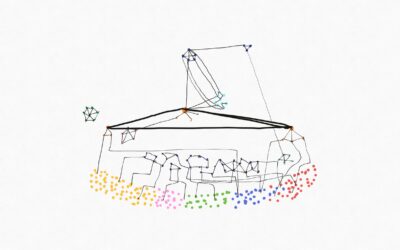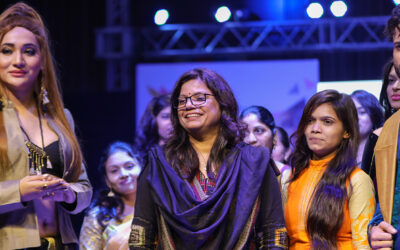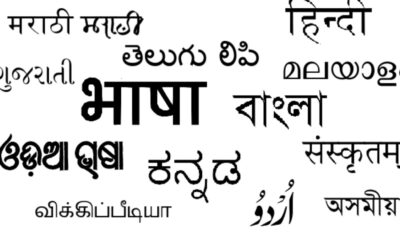Recently, I relocated to Delhi. I was fortunate enough to have friends who were already staying in a locality called Alaknanda in south Delhi and accordingly, I moved in with them. As I was settling in, it took me just a walk down the road in front of the house to understand the existing social structures in the area.
The road starts from Kalka Public School and St. George School, each spread over an area exceeding 10,000 square feet upto the Govindpuri fish market. It is known as the Kalka Public School Road and the length is about 1.3 kms. It looks like any normal road for an outsider. But as you walk on the road, you realise that there are a lot of things happening. You see the difference among various class of people in the society.


Within a week, I could tell who belongs to which income group and what time people get running water in their taps at home based on their income groups. Not only that, I also came to know that the price range of the vegetables/groceries differ as one walks down the lane. This was new to me, and I was really taken aback to see such categoric and on-your-face segregation.
I have grown up in Mumbai and hence, I know what urban poverty means. Adjoining to Mumbai international airport is Asia’s largest slum, Dharavi. And next to the fancy Malabar Hills is Banganga, which is a poorer locality. Everything is right in front of you when you move around the city and there is no hiding. But with Delhi, especially south and central, I felt like the city is hiding something from me. As I walked around the connecting roads of the city, I kept wondering, where do the poor people live?
When my friend was describing the locality, she said, “We stay in the centre of the road. If you go to the right, you will reach to the well-off part of the locality. You will find good restaurants and florists and pet shops. You walk to the left and you will find everything from groceries to furniture at an extremely low-price.” As I spent more time, I realised how apt the description was.
Starting from a fancy school to walking up to areas where the working class lives, this road has defined how we design social structures in our way of living
What’s In The Name?
Developed by the Delhi Development Authority, the apartments here are classified as High-Income Group (HIG) flats, Middle-Income Group (MIG) flats, Low-Income Group (LIG) flats and Economically Weaker Section (EWS) flats. HIGs are usually gated societies with 3 BHK flats with ~1400 sq. ft carpet areas. Followed by MIG flats with ~1000 sq. ft , LIG flats with ~650 sq. ft carpet area and EWS flats with ~350 sq. ft carpet area. These names are not just for official classification but at times, you will even find it in the postal address.
You will ask what’s wrong with the name as it makes it easy to categorise the flats and also makes it easy to identify what style of flats they are. But if we think about it, isn’t it the same as surnames were used to categorise one in caste system? Our surnames tell our castes and now our addresses tell our class.




(Water) At Your Convenience
The water supply timings on the same lane differ as per which income group does one’s building lie on. When I looked up on the Delhi Jal Board website, the water timings were different categorically. It goes on to tell what convenience feels like.
| Category | Morning | Evening |
| 1. HIG and MIG flats | 7:00 to 9:00 am | 7:00 to 8:30 pm |
| 2. LIG and EWS flats (in few areas this group receives water supply only once a day) | 4:00 to 6:30 am | 4:00 to 5:00 pm |
Now if you are a working professional, you will understand the concern in the timings. I am someone with a 9-5 job and a sleep cycle from 12-8. I would have to change my whole schedule if I need to wake up at 4 am to fill water. It is not impossible; I would get used to it after sometime. But it will definitely be a matter of inconvenience for me. As you walk down the lane you will realise how the informal settlements go on increasing with the width of the road becoming narrower. The traffic conditions get worst, along with the cleanliness.




As days passed and I visited more areas in Delhi, I realised that this is a pattern in the whole city. Every better off locality has a poor neighbourhood – Alaknanda has Govindpuri, East of Kailash has Sant Nagar, Malviya Nagar has Khirki. By design, the layout of these areas makes sure that you don’t come across these poorer parts directly. They are at the end of the road of the affluent part or in the interiors. When you travel from the main road, all you get to see first are the sprawling bungalows and posh offices. Only after you cross them do you get to see the other side of the same locality.
What this made me realise was that our cities/localities are not just a sum of buildings, but a social relation/structure that their inhabitants develop. There is an underlying dynamic in the various categories – a HIG individual will go up till a specific part of the road to buy their vegetables and not beyond that. There have been incidents where I have been warned by the shopkeepers near my apartment to avoid bringing groceries from that ‘bazaar’ because they are not of good quality.
Being a poor person in a city not only means you are poor by income. It also typically means inadequate space for housing, road, sanitation, water timings and much more.
*** Feature image courtesy News Nation




This is so well written, Pranoti. I really look forward to having more conversations with you for new perspectives of this city ✨
This is so well written, Pranoti. I really look forward to having more conversations with you for new perspectives of this city ✨